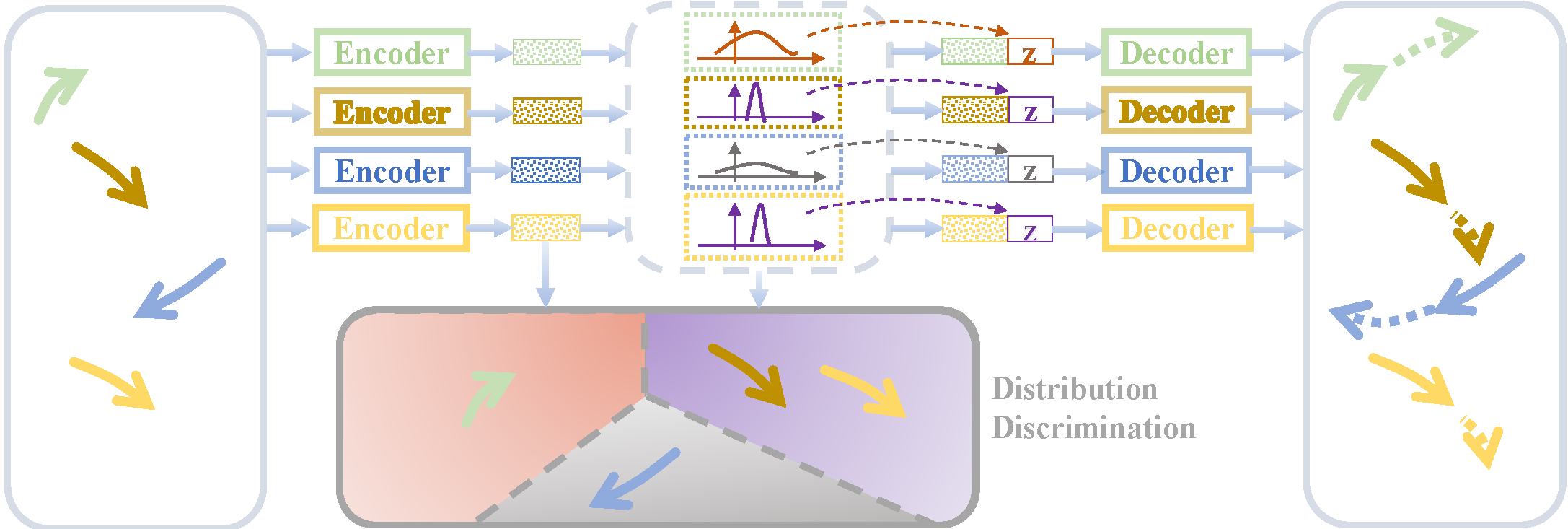Personalized Trajectory Prediction via Distribution Discrimination
Trajectory prediction is confronted with the dilemma to capture the multi-modal nature of future dynamics with both diversity and accuracy. In this paper, we present a distribution discrimination (DisDis) method to predict personalized motion patterns by distinguishing the potential distributions. Motivated by that the motion pattern of each person is personalized due to his/her habit, our DisDis learns the latent distribution to represent different motion patterns and optimize it by the contrastive discrimination. This distribution discrimination encourages latent distributions to be more discriminative. Our method can be integrated with existing multi-modal stochastic predictive models as a plug-and-play module to learn the more discriminative latent distribution. To evaluate the latent distribution, we further propose a new metric, probability cumulative minimum distance (PCMD) curve, which cumulatively calculates the minimum distance on the sorted probabilities. Experimental results on the ETH and UCY datasets show the effectiveness of our method.
PDF Abstract ICCV 2021 PDF ICCV 2021 Abstract


 UCY
UCY